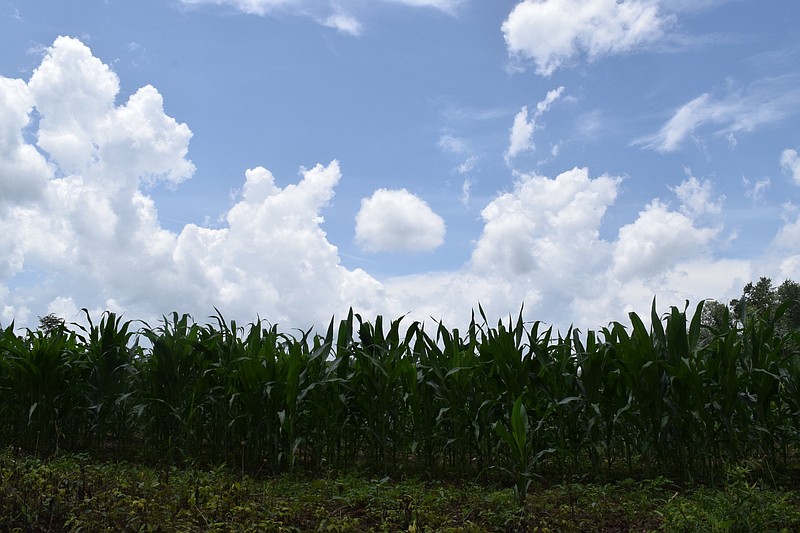One hundred years ago, the 1920 census showed Tennessee had more males than females, had a decreasing Black population and relatively few people born south of the country's border, and was a distinctively rural, agricultural state.
The 2020 census currently is being released in dribs and drabs, but 2019 QuickFacts from the census bureau show the state's demographics have changed significantly in the last century.
Men are used to being outnumbered today, but 100 years ago the state had 100.9 males to every 100 females. Today, the state population is 51.2% female.
Many Blacks not only in Tennessee but all across the South had migrated north by 1920 for better jobs. The state, like others, showed a 4.5% decrease from 1910.
Chattanooga at that time had a population that was 32.6% Black, while Hamilton County was 23.4% Black and was the state's only county in its eastern Grand Division with more than 12.5% Black residents.
Native born whites accounted for 75.1% and foreign born whites for 1.5% of Hamilton County's population of 115,954. Other than whites and Blacks, only five others were said to live in the county.
Among the county's foreign born, 405 came from Russia, 282 from Germany, 225 from England and most of the rest from other European countries. Seven came from Syria and five came from Mexico.
Today, the county is 70.9% white, 19.3% Black and 6% Hispanic.
Census figures showed the state was 73.9% rural in 1920, down from 79.8% in 1910. According to the 2010 census, it was 66.4% urban, up from 63.6% urban in 2000.
The occupations of Tennessee's citizens in 1920 reflected that rural status. Almost half (48.2%) worked in agriculture, forestry or animal husbandry. Another 18.2% worked in manufacturing and mechanical industries. Only 3.7% worked in what was termed "professional service."
* The state had 252,774 farms, which averaged 77.2 acres, the eighth smallest acreage per farm in the country. The worth of its farm properties was $64.17 per acre. In 2017, the state had nearly 70,000 farms, with the average farm 155 acres.
What was on those 1920 farms?
Corn (48.6% of state farm acreage), cotton (11%) and hay and forage (25.8%) were its three most valuable crops. One hundred years later, corn is still king, followed by soybeans, and hay and what's now called haylage.
But it led the nation in 1920 in acreage growing strawberries and in the number of quarts produced. It was second in the number of pounds of butter made on its farms and second in farms growing broomcorn. It ranked third in pounds of tobacco produced, third in farms growing soybeans, third in farms growing mustard seeds, third in the number of farms making butter, and third in farms producing honey and wax.
Tennessee was fourth in farms growing tobacco and in acreage of tobacco, fourth in sorghum grown for "sirup" and in acreage of the sorghum grown for "sirup," fourth in peaches (comfortably ahead of Georgia!), fourth in farms with dairy cows, fourth in farms with bees, and fourth in farms selling forest products.
* In the 1920 Volunteer State, 76.5% of men over 10 (!) were gainfully employed, but only 17.2% of women worked outside the home. When they did, they were, in order, servants, laundresses, farm laborers, farmers and teachers.
The census that year listed only one woman working in each of a variety of industries across the state, including drovers or feeders, fisherman/oysterman, iron mine operative, lead and zinc mine operative, quarry operative, salt well and works operative, brick and stone mason, cabinetmaker, carpet mill worker, electric light and power plant worker, automobile factory worker, charcoal and coke works worker, street railroad conductor, pawn broker, rag dealer, butcher, keeper of pleasure resort or racetrack, and bootblack.
Locally, among industries, Chattanooga ranged from 3,114 employed in foundry and machine shop products and 1,024 in knit goods to one person each in the manufacture of brooms and one in coffins.
* Census figures in 1920 also showed the city was making progress in literacy. While 6.1% of people in the U.S. were illiterate - down from 9.4%, only 5.9% in Chattanooga were - down from 9.9% in 1910. Native whites in the city were 1.8% illiterate, foreign born whites were 5.2% illiterate and Blacks were 13.8% illiterate.
The city's density that year had risen to 56.1 people per square mile, up from 52.4 10 years earlier. In 2018, the density was 1,293 per square mile.
And, in a quirk that wouldn't change until 1950, Chattanooga actually was in the western half of the U.S. population median. The median of the country - where as many people lived east of the line as west of the line - ran from the northern peninsula of Michigan down an imaginary line that ran about 20 miles east of Chattanooga, ending eight miles east of Appalachicola, Florida.
